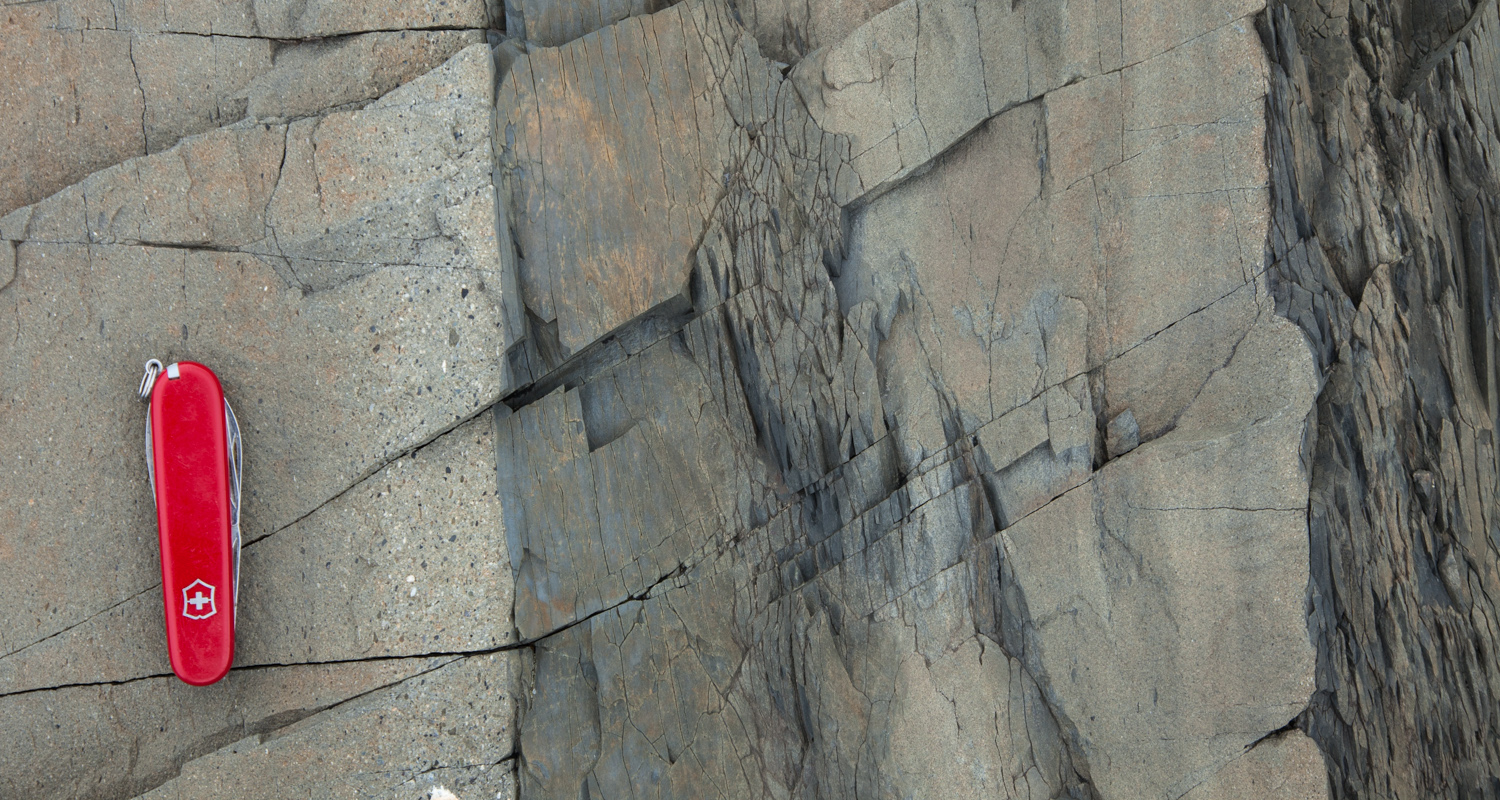
If you think about a mixture of sediment settling out of suspension, you can easily imagine the coarsest grains settling to the bottom first, followed by increasingly finer material. The result would be a graded bed, in which the coarser sediment lay on the bottom and gradually decreased in grain size upwards. In this photo, the sandstone beds exhibit such grading to the left side of the image, indicating the former "up" direction. Notice also that the base of the sandstone beds are abrupt and marked by small erosional scours as well as a flame structure. Each sandstone bed marks a new depositional event.
Moreover, the shale exhibits slaty cleavage but the sandstone does not. This difference can be explained on the basis of grain size, as cleavage formation is partly grain-size dependent. Dissolution creep, which forms cleavage, is much more effective in finer materials than coarser ones.
These turbidites were likely deposited during the Tertiary --and are the same rocks as shown in the photo "turbidites and slaty cleavage".
|
Onto the next photo: Aerial view of the Wallowa Mountains, Oregon
Back to Ten favorite geology photos from 2015